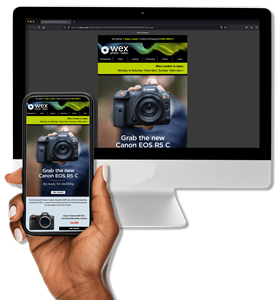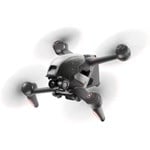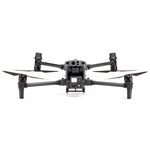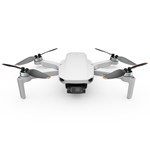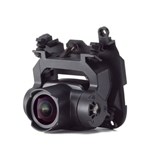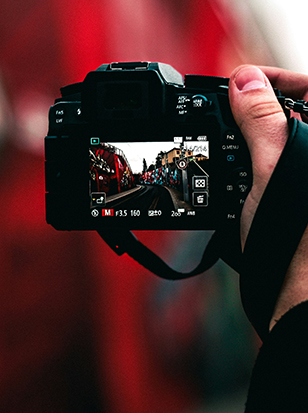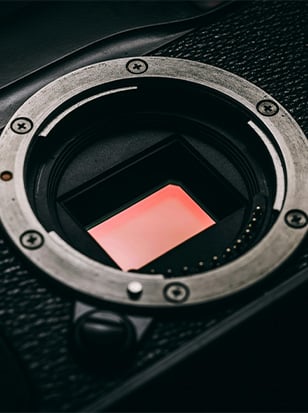
Drones are more popular than ever, particularly for photography and videography. We love seeing the kinds of creative imagery that the photo community is creating with the best drones, and these days it’s rare that a new TV show drops without a drone shot or two in it. With drones being affordable, easy to operate and fun to fly, there’s never been a better time to dive into the world of aerial image-making — as long as you make sure you follow the rules.
The Civil Aviation Authority (CAA) has recently announced some major regulation changes with regard to drones and how they can be flown, and it’s vital you stay up to date. Failing to adhere to regulations when flying a drone can lead to severe legal consequences and potentially endanger the welfare of others. So, we’ve put together this quick primer on the Drone Code and what you need to know. We also have our pre-flight checklist.
We’ve partnered with Eagle Eye Innovations, accredited specialists in drone pilot training, to help you stay safe in the air. Read on for everything you need to know about flying drones safely and legally in 2025…
The Drone Code: What IDs do I need?
There are two types of ID you may need to fly a drone — a Flyer ID and/or an Operator ID. Every single drone we sell at Wex will require at least an Operator ID, due to the fact that all drones with cameras require the user to have one.
An Operator ID designates you as the person responsible for managing the drone, while the Flyer ID shows that you have passed CAA’s official theory test.
Our drone pre-flight checklist provides more details on flyer IDs and operator IDs, including how to register for one. For smaller drones, you may only need an Operator ID (which must be displayed clearly on the drone itself) but for anything larger than 250g, you’ll also need a Flyer ID.
|
Type of drone or model aircraft |
ID needed |
|
|
|
Flyer ID | Operator ID |
|
Below 250g / toy |
 |
 |
|
Below 250g / not a toy / no camera |
 |
 |
|
Below 250g / not a toy / with camera |
 |
 |
|
250g or above |
 |
 |
Drone usage is categorised into a number of separate types of flying:
Open A1: Basic, low-risk flying, can be over people but not over assemblies of people (crowds), maximum weight 900g.
Open A2: Higher-risk flying that is permitted to be closer to people, maximum weight 4kg.
Open A3: Low-risk flying, far from people, maximum weight 25kg.
Flight in the Open A1 and A3 categories is generally permitted with just an Operator ID and Flyer ID, while flying in the Open A2 category requires specialised certification. Eagle Eye offers an A2 certificate of competency, though you likely don’t need it unless you’re going to be flying for professional applications.
The Drone Code: Flying safely
Flying your drone safely is your responsibility, and it’s essential to be familiar with the rules and regulations surrounding drone flight before you take to the air. Here is a quick precis of the rules you need to know about:
Always keep your drone in sight.
This means maintaining visual contact with your drone and awareness of the drone’s orientation at all times — meaning you can see it with the naked eye, not through an intermediary device like a connected smartphone. You need to be able to see your drone without visual aids like binoculars (glasses are fine), and there should never be visual obstructions between you and the drone.
The main exception is when you have your drone set to ‘Follow-me’ mode. In this case, you don’t have to maintain visual contact at all times, though you should observe all other flying guidelines.
For FPV flying, you need an observer
An observer is the designated term for a second person who is present while you’re flying. This can be useful, as a second pair of eyes for obstacles and hazards is always good to have. The observer should be within speaking range, and while they don’t need a Flyer ID, they should be familiar with the regulations.
In most cases, an observer is optional. However, if you are flying an FPV drone, meaning you’re using goggles or a similar device to fly using live video, then an observer is mandatory.
Fly below 120m (400ft)
The legal maximum height for drone flying is 120m (400ft). This is to ensure that your drone doesn’t get in the way of aircraft, though you should be mindful of aircraft like helicopters or other drones that may be flying lower.
The 120m distance is always related to the ground beneath your drone — so if the ground rises or falls, you may need to adjust your flying height to compensate, ensuring that you are never flying more than 120m from the earth’s surface.
Stay at least 50m away from people
At all times, you must maintain a horizontal distance of 50m away from other people. This distance remains the same no matter how high you are flying. You are not allowed to fly directly over people, irrespective of distance. In general, it is just a good idea to keep your drone far away from other people wherever possible.
You are encouraged to increase the distance you fly the drone away from people if there is a potential greater risk — e.g. windy weather means your drone might fly out of control, or you’re flying at high speeds. The 50m rule also assumes you are flying at a height of about 50m, and if you are flying higher than this, you should increase your horizontal distance accordingly. So if you’re flying 80m in the air, you should maintain an 80m horizontal distance from other people.
There are three main exceptions to the 50m rule:
Exception #1: Your drone weighs less than 250g
Sub-250g drones can be flown closer to people, though you still should not fly directly over them, and should take every precaution not to endanger them.
Exception #2: The people in question are involved with what you’re doing
You can fly near anyone who is involved in your flight — observers, friends, family, etc.
Exception #3: You have an A2 Certificate of Competency
The A2 certification allows you to get closer to people, though still with restrictions regarding flying over them, and regarding the weight of the drone (which shouldn’t exceed 500g).
Ultimately though, the rule is simple to follow — don’t fly your drone near people. There’s a level of common sense you can apply; if you think you are too close to people, you probably are. Move. If you are in a busy area where people often move around unpredictably, don’t fly there.
Don’t fly over crowds
Simple, self-explanatory. This rule applies to every single category of drone, even sub-250g toys — do not fly it over a crowd. The definition of a crowd might include a gig audience, a religious gathering, a protest march, a busy shopping street — any gathering of people where those at the centre cannot easily move away.
Keep 150m away from buildings
This applies to drones weighing more than 250g. Always keep a distance of at least 150m away from “residential, recreational, commercial and industrial sites”, which can mean pretty much any type of building, including a single house.
Keep away from airports
Non-negotiable. Do not fly your drone anywhere near an airport. This, more than anything else, is something the authorities take an extremely dim view of. NATS has an interactive map of no-fly zones around the UK, but you can also exercise a healthy dose of common sense and simply not fly your drone if you are anywhere near anything that even looks like an airport.
Check for flying hazards
In general, it’s a good idea to do a sense-check before you fly in any particular area. Are there any restricted areas, such as over prisons or government buildings (again, the NATS map is useful here)? Are there any temporary events happening in the area like festivals, airshows or funfairs? Is there any endangered wildlife in the area? Are there any regional bylaws that could impact your flying? Check for NOTAMs (Notices to Aviation) which detail any reasons why aviation rules in a particular area may have changed — many drone-flying apps will tell you these.
The Drone Code: Familiarise yourself with your drone
Your drone’s instructional manual will provide you with vital statistics such as the safe transmission distance for controlling your drone, estimated maximum flight times, obstacle-avoidance systems and more. Make sure you know what your drone can do, and what it can’t.
This also goes for the day of the flight — check power levels are at maximum and that software is up to date.
If you plan to carry cargo with your drone, make sure you’re not going to exceed the maximum take-off mass, which you should find in the drone’s instructions. Cargo must be secured properly, must not be dangerous (i.e. corrosive material like bleach or flammable material like petrol) and must never be dropped from your drone mid-flight.
Have you weighed your drone?
Some smaller drones are sold as weighing 250g or less, which would mean you don’t need a Flyer ID. However, some of these drones may weigh over 250g once accessories such as propeller guards or ND filters are attached. It is the pilot’s responsibility to check the take-off weight before flying.
In the UK, drones weighing 250g or more require the pilot to hold a Flyer ID, which involves passing a free online test provided by the Civil Aviation Authority (CAA). Regardless of weight, all drones with a camera must be registered to obtain an Operator ID.
By law, you must:
- Register as an operator (for drones with a camera, including those under 250g)
- Hold a Flyer ID if the drone weighs 250g or more
- Follow the CAA’s Drone and Model Aircraft Code
For more information or to register, visit the https://register-drones.caa.co.uk
The Drone Code: Make sure you and your drone are safe
If there is any reason not to fly, you shouldn’t.
If you are unwell, intoxicated or otherwise impaired… don’t fly.
If the weather could severely affect your flight, though strong winds, rain or extreme cold… don’t fly.
If there are any unusual circumstances in the area such as an ongoing emergency, low-flying aircraft or suspicious activity… don’t fly, or stop flying immediately if you already are.
Essentially, if safety is ever at all in doubt… don’t fly.
The Drone Code: Insurance
For the majority of drone flights, insurance is not required. Insurance is only mandatory when you are flying a drone in a non-recreational capacity (i.e. for paid work), or you are flying a drone that weighs more than 20kg.
With that said, taking out third-party liability insurance could be a good idea, as you will be responsible for any damage or injury caused by your drone while you’re flying it.
The Drone Code: Privacy
When your drone is equipped with a camera, you have to be careful not to intrude on anybody’s privacy. This means that taking photographs of video in places where they have a right to a reasonable expectation of privacy — like a home or a garden — is strictly a no-no.
This also means you should be familiar with your drone’s camera and its capabilities, like how far it can zoom, so that you don’t intrude on someone’s privacy unintentionally. People who can see your drone should also be able to see who’s operating it, which is one of the reasons why it is important to maintain line of sight.
Major changes to UK drone regulations: What you need to know
The Civil Aviation Authority (CAA) has introduced a new regulatory framework that will reshape the way drone pilots are trained and certified in the UK. Known as the Remote Pilot Competence (RPC) Framework, this update is designed to raise standards and improve safety, particularly for those flying within the Specific category.
Below, we outline the key changes, what they mean for existing qualifications, and why Eagle Eye Innovations – a leading Recognised Assessment Entity (RAE) – is our recommended training provider. You can read their full write up of these changes here.
What’s changing?
The CAA has created a new tiered structure of remote pilot competence, replacing the current General Visual Line of Sight Certificate (GVC) over time. Under the new system, there are four defined levels of pilot training:
RPC-L1: Basic Competence
Scope: For straightforward Visual Line of Sight (VLOS) operations; equivalent to the current GVC.
Entry requirements: Completion of the CAA’s Open category online training and theory test (Flyer ID).
What’s involved: Basic theory and practical training, including a written exam and flight assessment.
RPC-L2: Intermediate Competence
Scope: Suitable for more complex VLOS and localised Beyond Visual Line of Sight (BVLOS) operations in atypical air environments.
Entry requirements: A valid RPC-L1 qualification and 50 logged flight hours on a similar drone platform.
What’s involved: BVLOS theory, operational planning, and risk management. Includes a practical flight skills assessment and at least 5 hours of flight instruction.
RPC-L3: Advanced Competence
Scope: For en-route BVLOS operations.
Entry requirements: A valid RPC-L2 qualification and 50 BVLOS flight hours in the same UAS category. Candidates must be 18 or older.
What’s involved: Advanced theoretical modules, three flight assessments, and in-depth practical training. All practical elements must be completed within six months.
RPC-L4: Expert Competence (not yet available)
Scope: For the most complex BVLOS operations, including those in controlled airspace alongside manned aircraft.
Entry requirements: RPC-L3 certification, 75 BVLOS flight hours in the same UAS category, and a valid Light Aircraft Pilot’s Licence (LAPL) medical. The minimum age will be 18.
What’s involved: Expert-level training, high-level practical assessments, and complex scenario preparation.
What about the GVC?
The introduction of RPC means the GVC will be phased out as the entry-level qualification for VLOS flights. While still valid for now, it will not allow progression to higher RPC levels.
Why choose Eagle Eye Innovations for RPC training?
Eagle Eye Innovations is one of the UK’s most trusted RAEs and our preferred training partner for those pursuing the new RPC-L1 qualification. Here’s why:
Build your skills with confidence
Their RPC-L1 course focuses on practical, hands-on training led by experienced, CAA-accredited instructors. It’s designed to help you develop real-world flying competence while building your understanding of safety and compliance.
Stay compliant, fly safely
Whether you’re flying commercially or recreationally, a recognised qualification ensures you’re operating within legal guidelines. The RPC framework is especially relevant as drone use expands into more regulated airspace.
Career progression
An RPC-L1 is your first step toward more advanced operations. With drone applications growing across industries, higher-level certifications (RPC-L2 and beyond) will unlock opportunities in complex and BVLOS operations.
In-person instruction
They offer face-to-face delivery, ensuring you benefit from expert guidance, immediate feedback, and practical learning – something online-only courses can’t match. You'll leave confident, capable, and ready for more advanced missions.
Credibility and trust
A recognised qualification can enhance your reputation – whether you're freelancing, contracting, or building a business. With Eagle Eye's longstanding reputation for excellence, you can trust the training will meet the highest industry standards.
For more details or to explore training options, visit Eagle Eye Innovations.
Sign up for our newsletter today!
- Subscribe for exclusive discounts and special offers
- Receive our monthly content roundups
- Get the latest news and know-how from our experts
